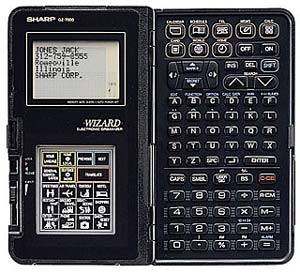|
The 50 greatest gadgets of the past 50 years
(PC World)
Updated: 2005-12-27 11:29 44. Sony Aibo ERS-110 (1999)

Sony's $1500 robotic pet, the ERS-110, was cuter than your average mutt
and a whole lot smarter. Advanced artificial intelligence allowed it to learn
from its environment, as well as sit, stand, roll over, and act puppyish. Later
"breeds" recognized your voice commands and featured a built-in Webcam, so you
could hire Aibo to babysit the kids. Photo courtesy of Sony Electronics.
45. Sony Mavica MVC-FD5 (1997)
Yes, it wasn't the
first digital camera, but it was the first that saved photos on a platform that
every PC user knew and loved: the ubiquitous 3.5-inch floppy. The FD5 provided a
very easy--and familiar--way to get images out of the camera and onto a PC.
Storing photos on floppies also meant that people could keep taking pictures as
long as they fed the camera more disks. Photographers could easily share digital
snapshots with family and friends because everybody used floppies. Like many
first-generation digital cameras, the $599 Mavica was bulky and ugly, but its
specs were up to snuff (for the time): Image resolution topped out at 640 by 480
pixels (which translates to 0.3 megapixel), and the camera had a sizable
2.5-inch LCD.
46. Learjet Stereo-8 (1965)

They're the butt of jokes these days, but 8-track tapes and decks
changed car audio forever. The Stereo 8, which first appeared as an option on
Fords, had minimal controls and was often mounted under the dashboard with ugly
U-brackets, but aesthetics weren't the point. With an 8-track in your car, you
were no longer at the mercy of local radio station playlists. That was a very
big deal at a time when only the largest cities had stations that played what
was then known as "album rock." And the sound! In those days 8-tracks blew the
doors off anything coming from a radio station, despite their infamous fadeouts
when the tracks switched. The 8-track didn't last all that long, falling out of
favor in the early 1970s as smaller, more convenient cassette tapes (and later
CDs) came along. Photo courtesy of 8-Track Heaven.
47. Timex/Sinclair 1000
(1982)
Invented by British gadget king Clive
Sinclair and marketed in the United States by Timex (which knew a thing or two
about affordable gizmos), this everyman's computer sold for a rock-bottom $100.
The slab-shaped T/S 1000 was cheap in every sense of the word--it packed a
minuscule 1KB of RAM and had a barely usable flat keyboard. Even so, it was a
blockbuster, briefly: Timex shipped 600,000 of them, many more were sold in
other countries, and clones even appeared. For an exhaustive look at the whole
phenomenon, consult the Timex Sinclair Showcase.
48. Sharp Wizard OZ-7000 (1989)

It didn't quite fit into a shirt pocket, and its non-QWERTY keyboard
wasn't the most intuitive of input devices. But long before the PalmPilot 1000
(#4) or even the Newton MessagePad (#28), the first Sharp Wizard helped
popularize the concept of a small, lightweight electronic address book and
calendar, thereby becoming the granddaddy of the modern personal digital
assistant. Want to read more? The Open Directory Project has a page full of
Wizard links. Photo courtesy of Sharp.
|